Precious metal investment researcher: Gold becomes the ultimate defensive asset in 2024
According to Laurent Maurel, a precious metal investment researcher at Recherche Bay, the United States is experiencing stagnant inflation, and gold has become the ultimate defensive asset in 2024, replacing bond assets. The buying frenzy of central banks around the world has consolidated the position of gold reserve assets. According to Bank of America (BofA), gold has now surpassed the euro and become the world's second-largest reserve asset after the US dollar, accounting for 16% of reserve assets.
The World Gold Council (WGC) recently released an article explaining the risk contributions of two types of assets, stocks and bonds:
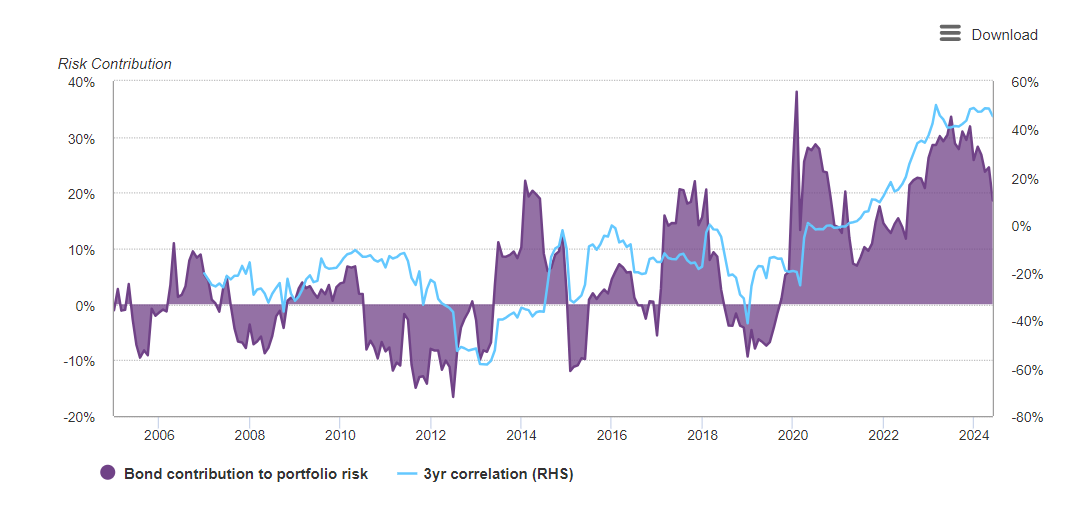
(Source: GoldSeek)
The purple part of the chart shows the contribution of bonds to the total portfolio risk, expressed as a percentage. Over time, this contribution has significantly increased, especially after 2014, reaching a significant peak of nearly 40% around 2020 and 2023. In recent years, the contribution of bonds to risk has fluctuated greatly. Prior to 2014, there were several periods where bonds had a negative contribution, meaning that bonds reduced overall investment portfolio risk.
Morrell pointed out that in recent years, the overall trend has been on the rise, indicating that bonds are becoming an increasingly important source of risk. They not only no longer protect the investment portfolio, but also increase overall risk.
The blue line in the above figure shows the 3-year correlation between bonds and Swiss stocks, while the right axis represents this correlation fluctuating between negative and positive values. When the correlation is negative, it means that the trends of bonds and stocks are opposite, which theoretically should reduce the overall risk of the investment portfolio.
However, in recent years, the correlation has become positive. Positive correlation means that the trend of bonds and stocks is the same, thereby increasing the overall risk of the investment portfolio.
A 60/40 investment portfolio can no longer mitigate market risk, on the contrary, it will actually enhance risk.
Gold is currently performing better than the 60/40 investment portfolio, and investors are starting to realize this reality. As I explained two weeks ago, gold is breaking through an important limitation compared to the 'classic' 60/40 investment portfolio.
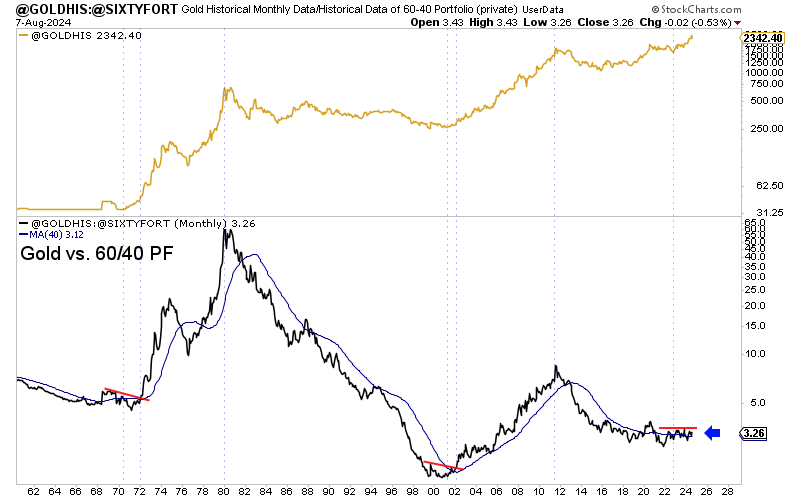
(Source: GoldSeek)
The dissatisfaction with US treasury bond bonds can also be explained by the behavior of US yields. In 2023, the US 10-year bond yields broke the downward trend:

(Source: GoldSeek)
TLT attempts to rebound with high trading volume in 2024, but the rebound is still too timid:

(Source: GoldSeek)
The sharp change in the long-term trend of the US treasury bond bond market has changed people's views on these assets, and inflation has changed the face of the US bond market. As the United States falls into stagflation, people's doubts about whether the country can repay its debts with a non depreciating currency are increasing. The Federal Reserve seems to have failed to fulfill its two responsibilities. Its fight against inflation has not yet won, and a second wave of inflation may occur in the coming months.
An economic recession seems to be imminent, and the inverted yield curve is a recession indicator that the market has discussed multiple times in this bulletin, indicating that the economy will officially enter a recession in the coming weeks:
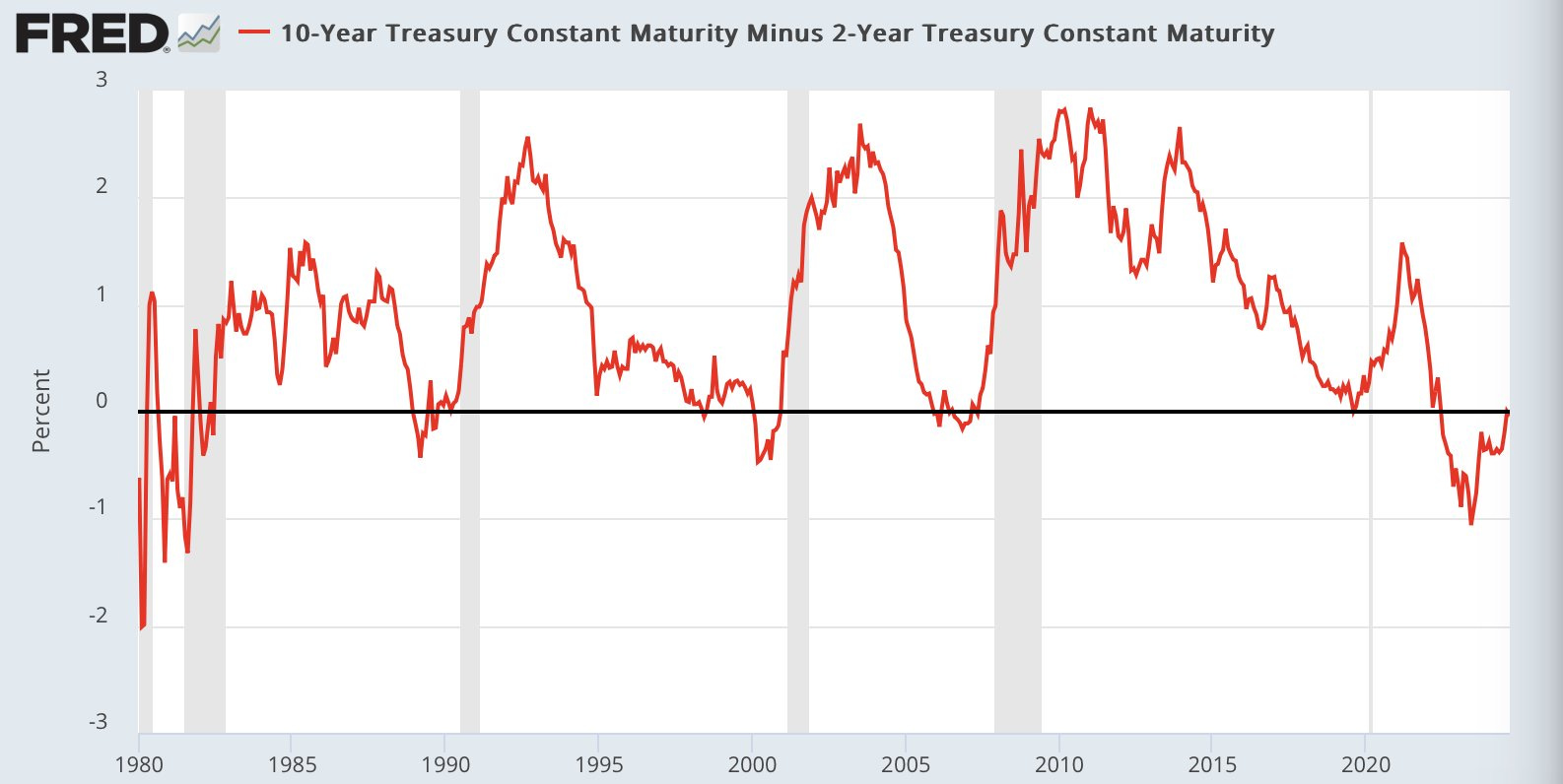
(Source: FRED)
Job vacancy data confirms that the slowdown in the US economy has exceeded expectations:
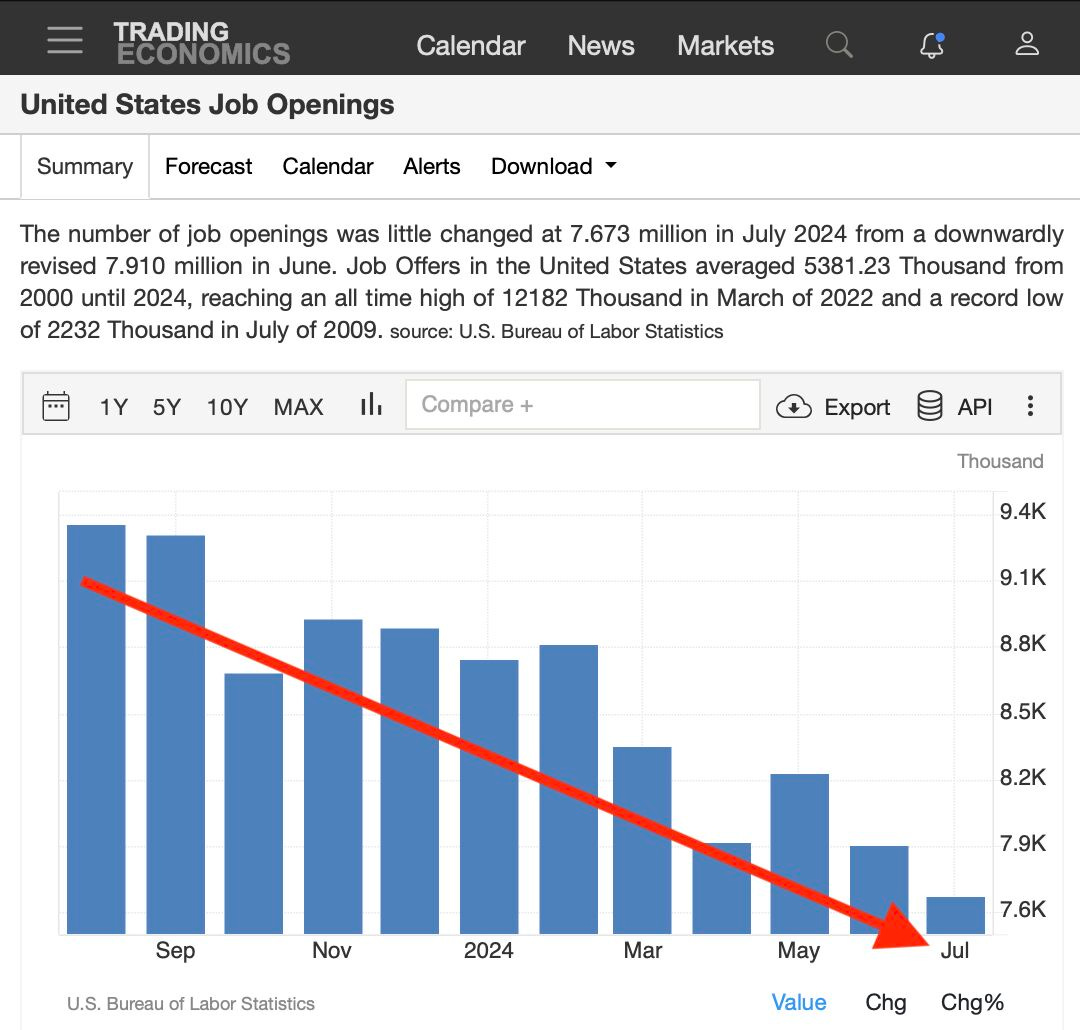
(Source: Trading Economics)
But most importantly, the latest ISM statistics have driven the market crazy this week. The US manufacturing index has been declining for the fifth consecutive month, falling to 47.2 points. The ISM Manufacturing PMI index was lower than expected, with an estimated 47.5 points last month.
The new order index fell from 47.4 points in July to 44.6 points, contracting for three consecutive months. In the past 22 months, manufacturing activity has declined 21 times, setting a record for the second longest period of decline in history. The most important number in these statistical data is commodity inventory:
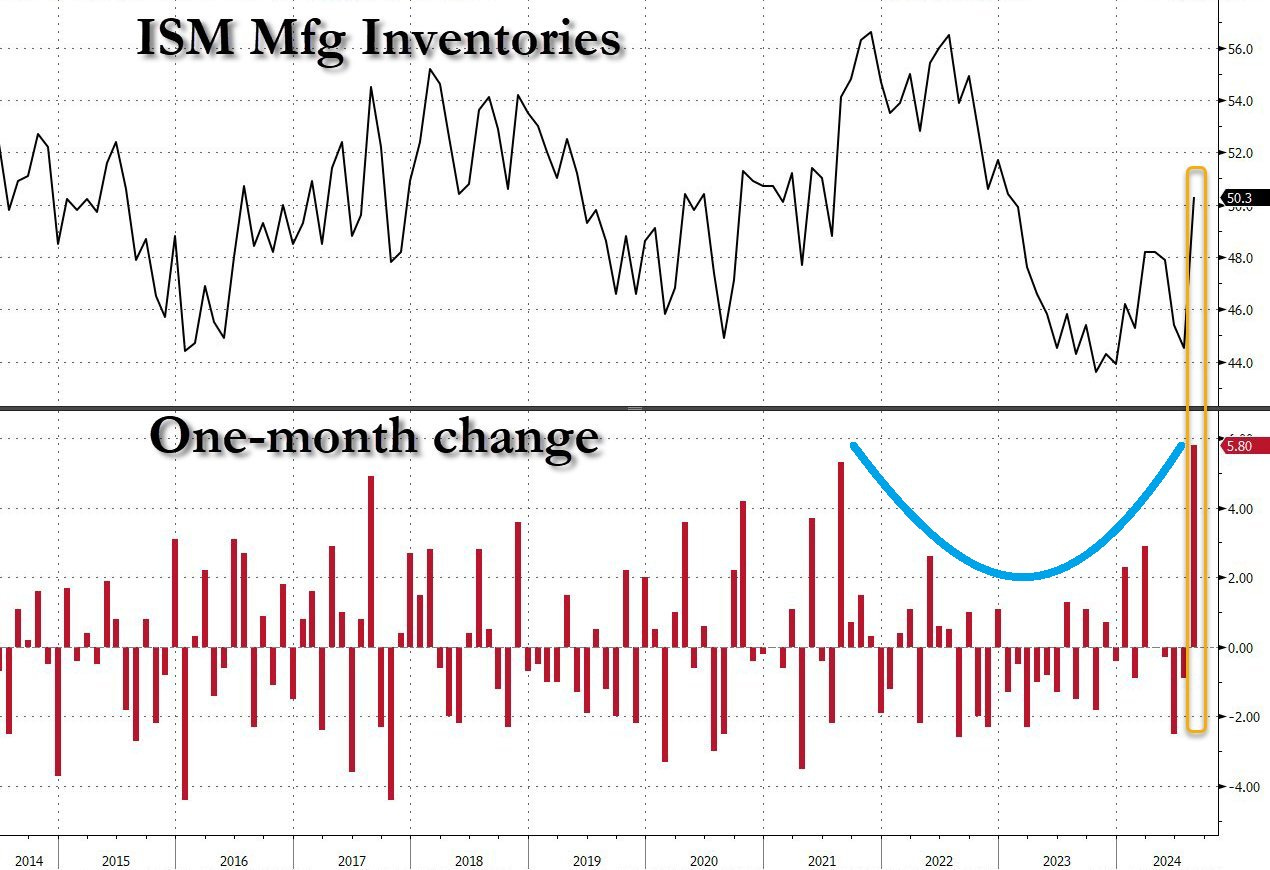
(Source: ZeroHedge)
Inventory surged, while consumption, the last engine of US economic growth, began to stagnate sharply. What is particularly worrying is that the decline in economic activity is now accompanied by a resurgence in prices. Although an increase in inventory should theoretically lead to a price drop, the opposite phenomenon is observed in the market. The payment price index climbed from 52.9 points in July to 54 points, marking the eighth consecutive month of increase. Demand decreases, inventory increases (due to unsold goods), and prices rise (due to labor and transportation costs).
Maurer emphasized, "This is the definition of stagflation, a nightmare for the Federal Reserve and the most vulnerable consumers who are now struggling to repay their debts
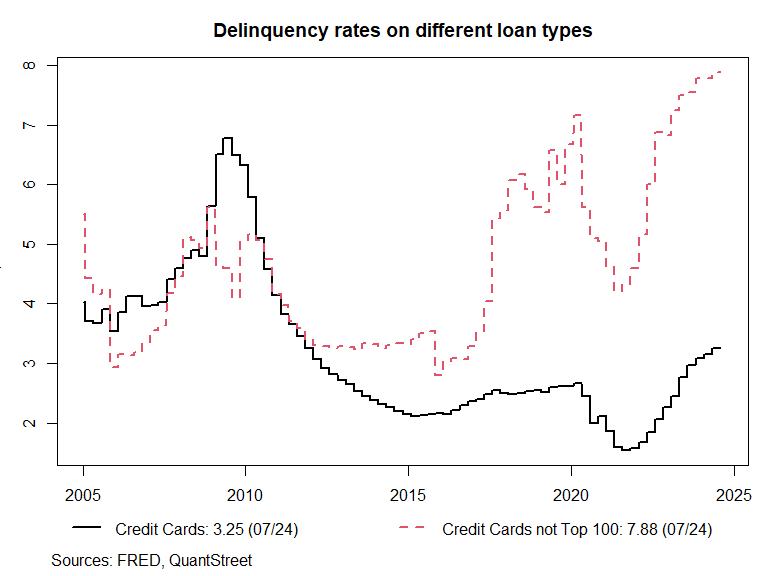
(Source: FRED)
Against the backdrop of stagflation, the United States has begun a new round of defaults:
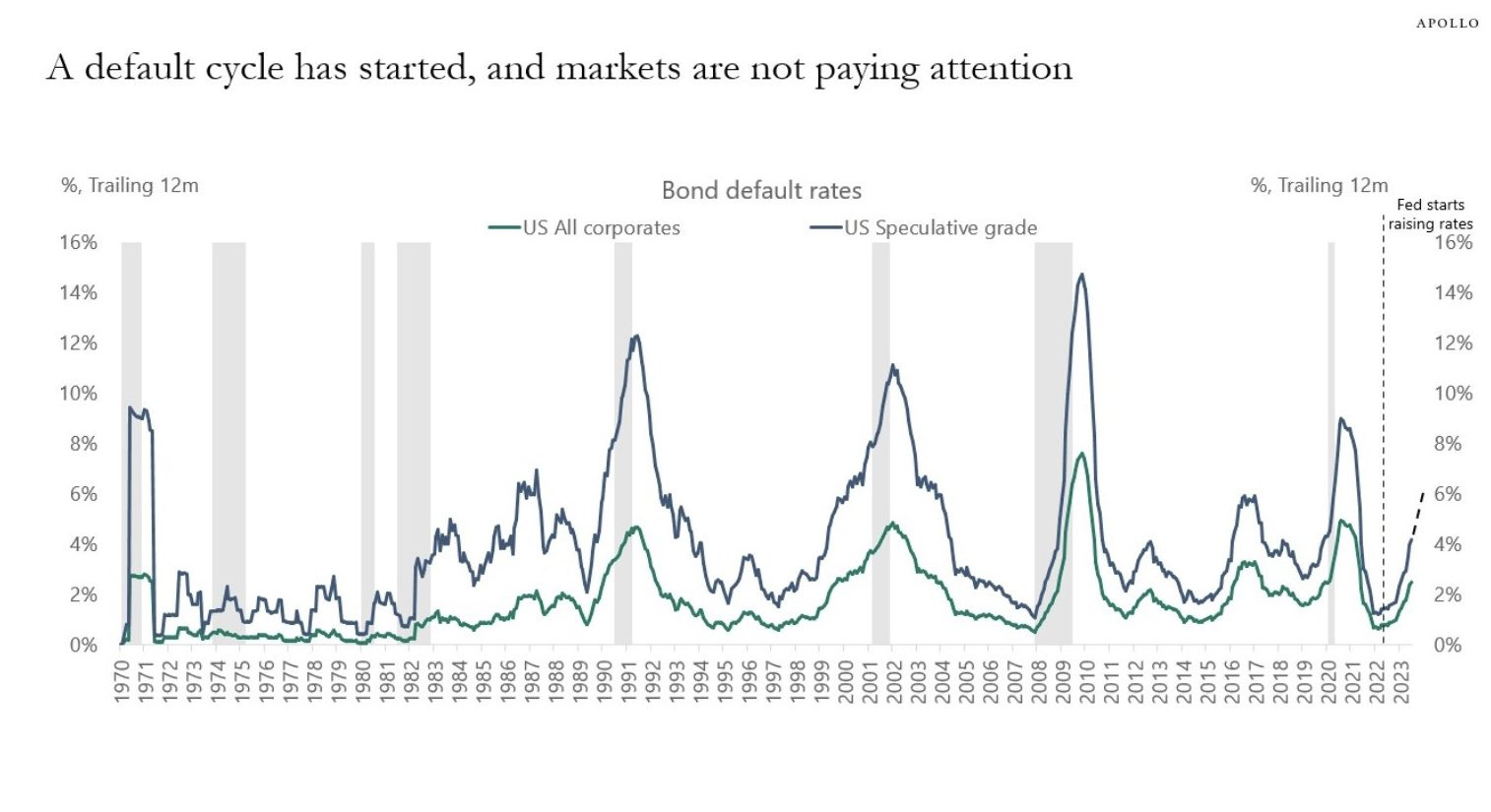
(Source: GoldSeek)
In the context of stagflation and the start of a new round of defaults in the United States, gold naturally attracts new buyers, "Morrell concluded.
Tips:This page came from Internet, which is not standing for FXCUE opinions of this website.
Statement:Contact us if the content violates the law or your rights
